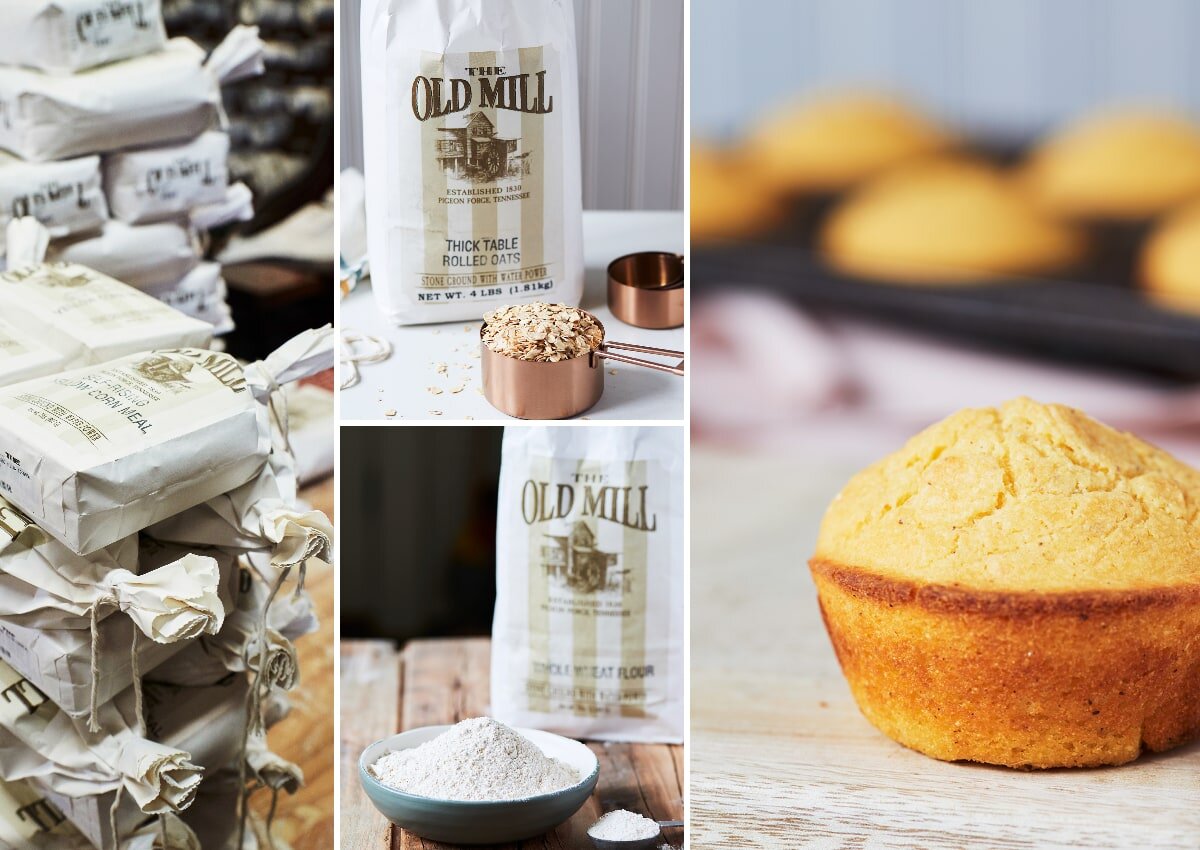
Mill Made: Handmade with Heart
If there were one phrase that could sum up the old mill story, what would it be?
This question recently sparked a lively conversation among our Old Mill team members, and many suggestions were tossed about for discussion. But as soon as someone said “Mill Made,” we all knew we had our answer.
More than home made, better than scratch made, “Mill Made” speaks to our values of craftsmanship, quality, and community in so many ways. It touches on the handcrafted nature of everything we do here at The Old Mill. And it’s a great starting place for explaining to visitors why we love coming to work every day and are so proud of what we do.
Take for instance the Old Forge Burger we serve in The Pottery House Cafe. One of the most popular items on the menu, this item is a perfect illustration of what we mean by “Mill Made.” It starts with our miller grinding the grains for our distiller to use in producing his spirits at The Old Forge Distillery. After he’s done distilling, he gives those “spent grains” to our bakers, who dry them out and further grind them so they can mix, hand-form, and bake the burger buns. Freshly-ground black angus beef is char-grilled and topped with a delicious Mill Made whiskey bacon jam that we prepare in house. Meanwhile, our potters have spent more than two weeks handcrafting the plate that the burger will be served on and delivered to the table by our friendly servers.
But this commitment to quality and craftsmanship didn’t just happen overnight. It’s who we’ve always been. It’s something you can trace back through our history – long before “farm to table” was trendy.
The Mill Made The Town
In the late 1700s, a Virginian named Mordecai Lewis received a land grant of 151 acres from the Governor of Tennessee to settle along what we now know as the Little Pigeon River. His son-in-law, Isaac Love, inherited that land and used the iron ore in the hills, the rich timberland, and the power of the river to build a forge. Love’s son later built a gristmill, building the structure from local timber and using the power of the river to turn the water wheel that in turn operated large granite mill stones. Soon families were traveling from near and far with sacks of dried grains to grind their harvests at the mill. While waiting for their corn and other grains to be ground into flour, farmers and their families would catch up on the latest gossip, and often tack notices of community events on the mill’s front door.
In time, the community’s first post office opened inside the mill, literally putting Pigeon Forge on the map. William Love, who served as both miller and postmaster, named the community “Pigeon Forge” after the flocks of passenger pigeons roosting in trees along the river during their southern migration. The mill served many other functions through the years, from a hospital for wounded Civil War soldiers to the first electric power company in the region in 1921.
The sleepy farm town became incorporated in 1961, and since the tourism boom hit in the early 1980s, Pigeon Forge, Tennessee has grown into one of the Southeast region’s most popular destinations for southern food and Appalachian crafts. The mill’s original front door, riddled with centuries of nail holes, continues to swing open throughout each day as a constant reminder to all who visit The Old Mill about its important role in Pigeon Forge history.
What was once a stopping place for farmers and locals has evolved over the years into a world-class destination for families from around the world who come visit the Great Smoky Mountains.
The Mill Makes Our Goods
Today, the water-powered historic Old Mill grinds 700,000 pounds of corn, grits, and other grains each year. Hand-filled in paper bags, stamped and hand-tied with a miller’s knot as they have been for two centuries, these products are then sold to our guests. Visitors to The Old Mill General Store and The Old Mill Farmhouse Kitchen can purchase bags of our cornmeal, flour and mixes.
Many of our freshly-milled grains are then used to prepare fresh, family-style meals in our restaurants to feed more than 1.3 millions guests each year. Used in fresh-baked breads and sweets, we take pride in the fact that we’re not just making things from scratch, but sourcing and grinding the grains as well. Additionally, the Historic Old Mill also grinds the grains our distillery uses to craft their award-winning spirits.
We apply that same kind of craftsmanship to hundreds and thousands of other items found here at The Old Mill property, perhaps most notably our hand-thrown pottery. In 1946, renowned American potter Douglas Ferguson discovered how the area’s red clay could be transformed into sturdy and beautiful works of art and opened a studio in a 100-year-old tobacco barn near the mill. Our talented artisans continue that tradition today. Many of those pieces fired in that kiln are used to set the tables in the Pottery House Cafe next door, which was once the home of the famous original potter.
But that’s just the tip of the iceberg. In that same spirit of Mill Made ingenuity, we proudly make our own ice cream; cook our own small-batch jams, jellies, and preserves in copper kettles; prepare dozens of different handmade confections; and all manner of spirits and products at our Old Forge Distillery. No matter where you visit here at The Old Mill, we’re pouring our heart into making things by hand.
The Mill Makes Us Who We Are,
And Who We Want To Be
As that mighty water wheel continually turns, so do the wheels of our imagination. Besides the goods it produces, the energy it generates has inspired us to become potters, cooks, distillers, dreamers, candy makers, writers, biscuit makers, photographers, and ambassadors of all we love about the Great Smoky Mountain region.







